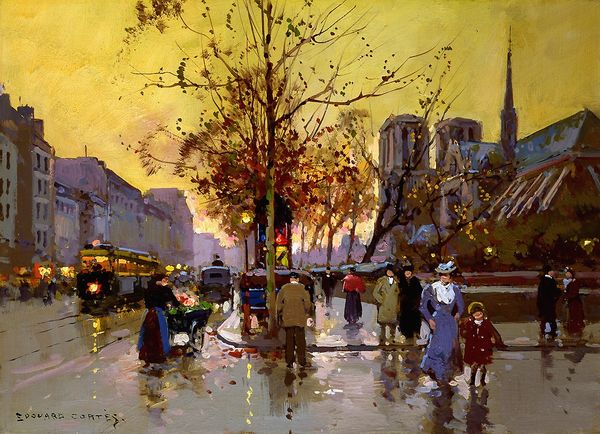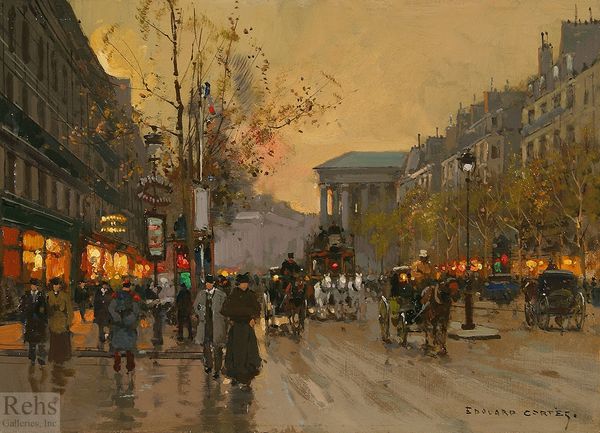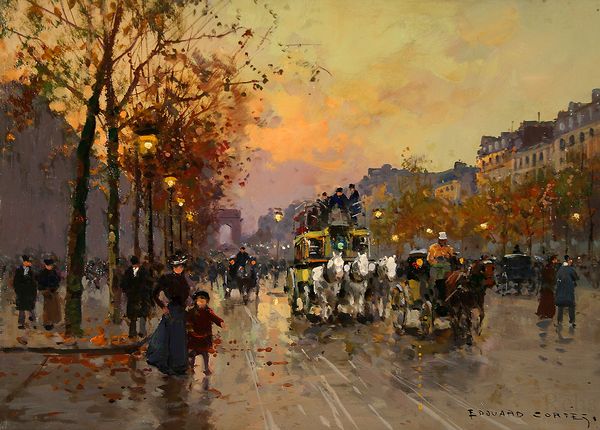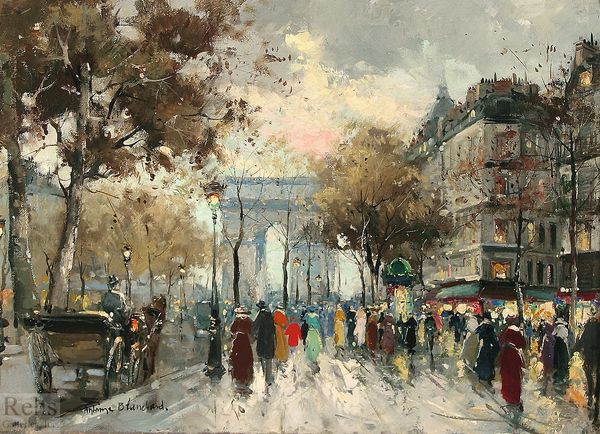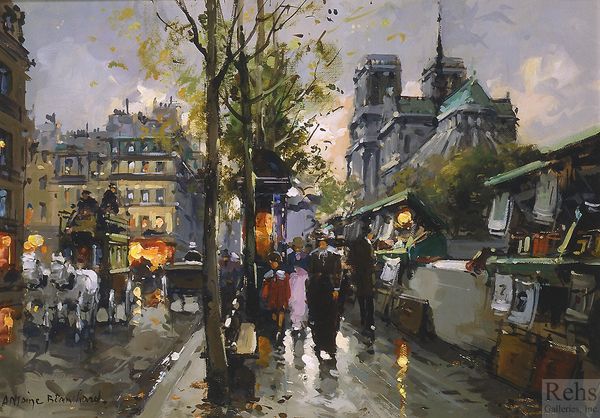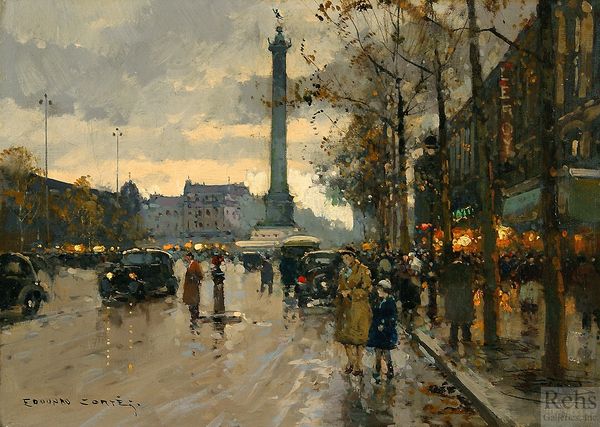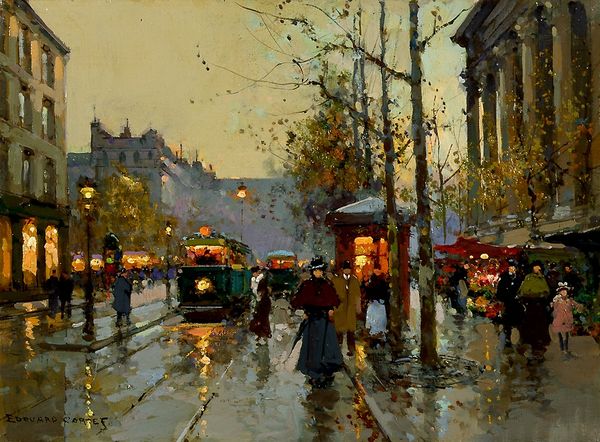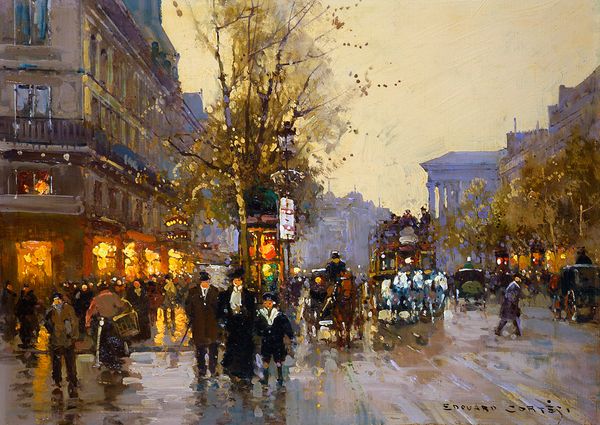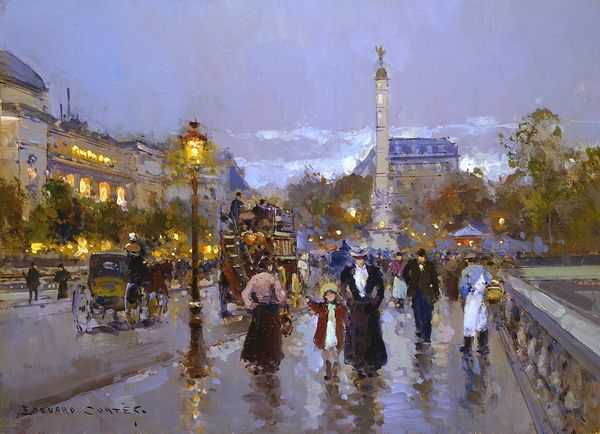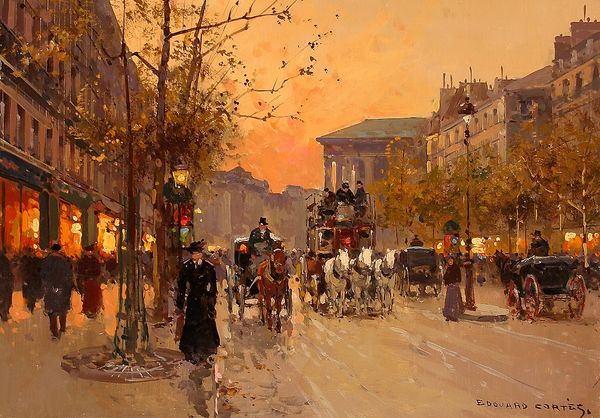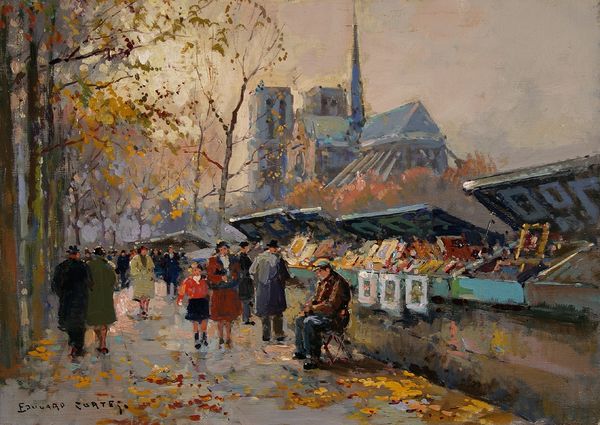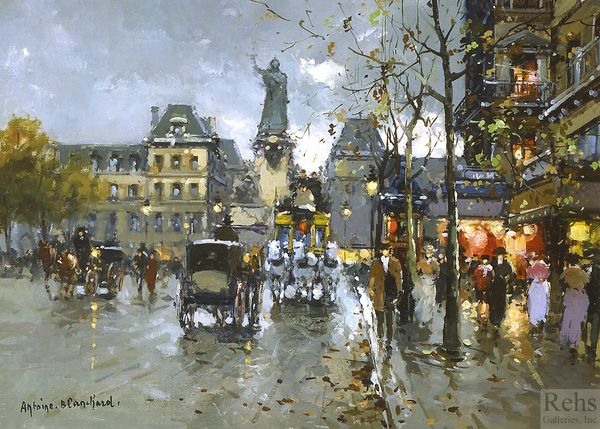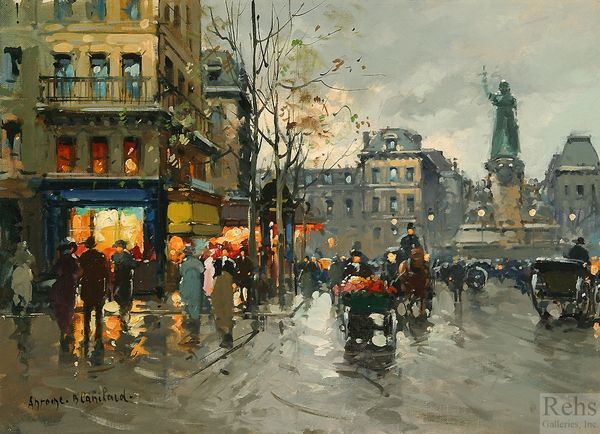
painting, oil-paint
#
urban landscape
#
painting
#
impressionism
#
oil-paint
#
landscape
#
cityscape
#
building
Copyright: Edouard Cortes,Fair Use
Curator: Immediately, I’m drawn to the palpable sense of atmosphere here, a wet and busy evening in Paris. The warm glow seems to rise up off the street. Editor: Indeed. The canvas is "Quai de Montebello, Notre Dame." Though undated, this oil painting is by the French artist Édouard Cortès, known for his Parisian cityscapes. There’s a story of industrial progress at play, as the painting style reflects shifts towards impressionism, embracing fleeting moments with loose brushwork, which, back then, meant modern life and the industrialized city, not traditional craftsmanship. Curator: Absolutely, but let’s not underestimate its composition. Notice how the buildings, figures, and even the streetlights, become modules to explore the reflective surface of water—and also the impact of weather on those building materials. Editor: Right, this isn't just a picture, but a portrait of urban life that highlights the bustling activity surrounding Notre Dame. The way people navigate their routines in proximity to such a grand and significant architectural monument begs the question of accessibility, public space, and how grand historical institutions coexist with ordinary citizens in Paris. Curator: And yet, the industrial production of pigments is also central to how quickly this painting was realized en plein air. Mass production and transport via railways expanded leisure activity and transformed visual consumption across multiple demographics and new middle classes. The atmospheric quality is more than just aesthetics; it speaks to social changes. Editor: Of course, while seemingly traditional, these paintings were widely accessible through reproductions—think postcards and prints—allowing people who'd never visit Paris to still consume this ideal. The public role of art was democratized in this manner, yet shaped by commercial demands. Curator: This piece highlights that accessibility. Through the handling of paint, Édouard’s canvas highlights both its formal setting as well as the conditions of production under accelerated capitalism. Editor: Ultimately, this is about considering how our engagement with such celebrated institutions like Notre Dame are facilitated, consumed, and reimagined, even by individuals who will never cross its doorway, let alone those hurrying home on a wet evening in Paris.
Comments
No comments
Be the first to comment and join the conversation on the ultimate creative platform.
